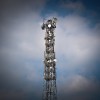Draft ETSI EN 301 489-1 V2.1.0 published ElectroMagnetic Compatibility (EMC) standard for radio equipment and services; Harmonised Standard covering the essential requirements of article 3.1(b) of the Directive 2014/53/EU and the essential requirements of article 6 of the Directive 2014/30/EU; has now entered the combined Public Enquiry and Vote phase of the ETSI standards EN Approval Procedure.
Available, (free of charge), from ETSI EN 301 489-1 V2.1.0 (2016-04)
This standard will be listed as a harmonised standard under the new EMC Directive (2014/30/EU), and the new Radio Equipment Directive (2014/30/EU).
ETSI EN 301 489 series of standards – overview
ElectroMagnetic Compatibility (EMC)standard for radio equipment and services;Harmonised Standard covering the essential requirements ofarticle 3.1(b) of the Directive 2014/53/EU and the essential requirements of article 6 of the Directive 2014/30/EU;
This a multi-part EMC standard for radio equipment which is structured as:
- One EMC standard for all radio equipment made up of several parts.
- All common technical requirements for EMC emission and immunity have been placed in the common part, which is the present document.
- Separate parts have been developed to cover specific product related radio equipment test conditions, test arrangements, performance assessment, performance criteria, etc.
- A clause is included in each of the specific radio parts, entitled “special conditions”, which is used as appropriate to cover any deviations or additions to the common requirements set out in the present document.
Currently there are 36 parts defined in this series:
| Part | Title |
| Part 1: | “Common technical requirements”; |
| Part 2: | “Specific conditions for radio paging equipment”; |
| Part 3: | “Specific conditions for Short-Range Devices (SRD) operating on frequencies between 9 kHz and 246 GHz”; |
| Part 4: | “Specific conditions for fixed radio links and ancillary equipment”; |
| Part 5: | “Specific conditions for Private land Mobile Radio (PMR) and Terrestrial Trunked Radio (TETRA) equipment and ancillary equipment (speech and non-speech)”; |
| Part 6: | “Specific conditions for Digital Enhanced Cordless Telecommunications (DECT) equipment”; |
| Part 7: | “Specific conditions for mobile and portable radio and ancillary equipment of digital cellular radio telecommunications systems (GSM and DCS)”; |
| Part 8: | “Specific conditions for GSM base stations”; |
| Part 9: | “Specific conditions for wireless microphones, similar Radio Frequency (RF) audio link equipment, cordless audio and in-ear monitoring devices”; |
| Part 10: | “Specific conditions for First (CT1 and CT1+) and Second Generation Cordless Telephone (CT2) equipment”; |
| Part 11: | “Specific conditions for terrestrial sound broadcasting service transmitters”; |
| Part 12: | “Specific conditions for Very Small Aperture Terminal, Satellite Interactive Earth Stations operated in the frequency ranges between 4 GHz and 30 GHz in the Fixed Satellite Service (FSS)”; |
| Part 13: | “Specific conditions for Citizens’ Band (CB) radio and ancillary equipment (speech and non-speech)”; |
| Part 14: | “Specific conditions for analogue and digital terrestrial TV broadcasting service transmitters”; |
| Part 15: | “Specific conditions for commercially available amateur radio equipment”; |
| Part 16: | “Specific conditions for analogue cellular radio communications equipment, mobile and portable”; |
| Part 17: | “Specific conditions for Broadband Data Transmission Systems”; |
| Part 18: | “Specific conditions for Terrestrial Trunked Radio (TETRA) equipment”; |
| Part 19: | “Specific conditions for Receive Only Mobile Earth Stations (ROMES) operating in the 1,5 GHz band providing data communications”; |
| Part 20: | “Specific conditions for Mobile Earth Stations (MES) used in the Mobile Satellite Services (MSS)”; |
| Part 22: | “Specific conditions for ground based VHF aeronautical mobile and fixed radio equipment”; |
| Part 23: | “Specific conditions for IMT-2000 CDMA, Direct Spread (UTRA and E-UTRA) Base Station (BS) radio, repeater and ancillary equipment”; |
| Part 24: | “Specific conditions for IMT-2000 CDMA Direct Spread (UTRA and E-UTRA) for Mobile and portable (UE) radio and ancillary equipment”; |
| Part 25: | “Specific conditions for CDMA 1x spread spectrum Mobile Stations and ancillary equipment”; |
| Part 26: | “Specific conditions for CDMA 1x spread spectrum Base Stations, repeaters and ancillary equipment”; |
| Part 27: | “Specific conditions for Ultra Low Power Active Medical Implants (ULP-AMI) and related peripheral devices (ULP-AMI-P)”; |
| Part 28: | “Specific conditions for wireless digital video links”; |
| Part 29: | “Specific conditions for Medical Data Service Devices (MEDS) operating in the 401 MHz to 402 MHz and 405 MHz to 406 MHz bands”; |
| Part 31: | “Specific conditions for equipment in the 9 kHz to 315 kHz band for Ultra Low Power Active Medical Implants (ULP-AMI) and related peripheral devices (ULP-AMI-P)”; |
| Part 32: | “Specific conditions for Ground and Wall Probing Radar applications”; |
| Part 33: | “Specific conditions for Ultra Wide Band (UWB) devices”; |
| Part 34: | “Specific conditions for External Power Supply (EPS) for mobile phones”; |
| Part 35: | “Specific requirements for Low Power Active Medical Implants (LP-AMI) operating in the 2 483,5 MHz to 2 500 MHz bands”; |
| Part 50: | “Specific conditions for Cellular Communication Base Station (BS), repeater and ancillary equipment”; |
| Part 51: | “Specific conditions for Automotive and Surveillance Radar Devices using 24,05 GHz to 24,5 GHz or 76 GHz to 81 GHz”; |
| Part 52: | “Specific conditions for mobile and portable (UE) radio and ancillary equipment of digital cellular radio telecommunications systems (GSM and DCS), IMT-2000 CDMA Direct Spread (UTRA and E-UTRA) and CDMA 1x spread spectrum”. |




